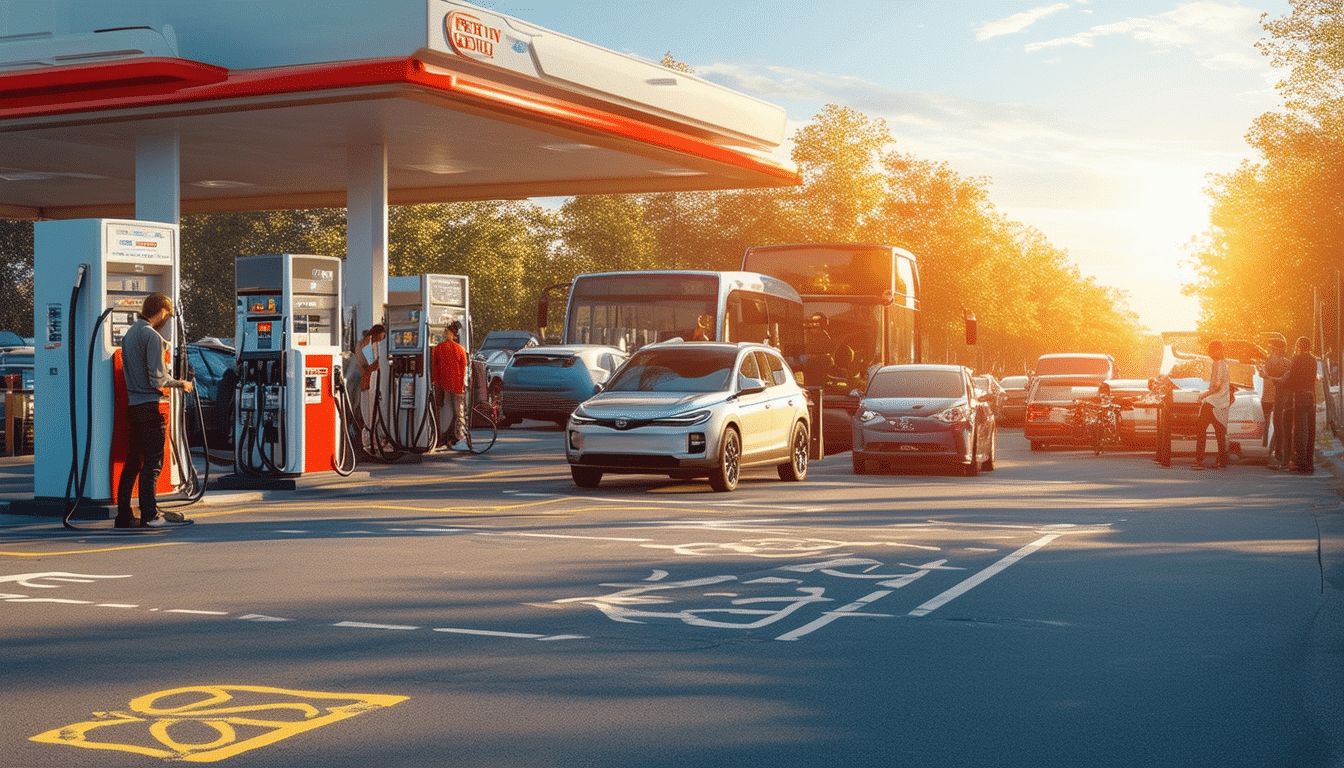The relationship between driving and fuel cost

The relationship between driving and fuel cost is a fundamental aspect that many drivers underestimate. The way a vehicle is driven can significantly impact gasoline consumption, which in turn affects the family budget. Factors such as speed, the use of air conditioning, and overall habits on the road directly influence fuel efficiency. Understanding this relationship is key to optimizing expenses and adopting efficient driving practices.
The way a vehicle is driven has a significant impact on fuel costs. Driving habits, such as speed, the use of climate control systems, and anticipation in handling, can influence how fuel is consumed. Understanding this relationship allows drivers to adopt more efficient practices and, consequently, minimize gasoline-related expenses.
Impact of speed on fuel consumption
One of the most notable relationships in fuel consumption is that corresponding to speed. Driving at high speeds leads to a direct increase in fuel expenditure. When acceleration is excessive, air resistance increases, forcing the engine to work harder, resulting in higher consumption. Therefore, maintaining a moderate speed is not only safer but can also be crucial for saving fuel.
Air resistance and speed
As speed increases, greater air resistance is generated, which translates into higher consumption. It has been shown that traveling in a prolonged gear at low revolutions can be more efficient. Thus, choosing to drive below the established speed limits not only complies with traffic regulations but also represents an economical alternative.
Influence of driving habits
Not only does speed play a crucial role; the driver’s behavior also significantly impacts fuel usage. For example, sudden accelerations and abrupt braking increase fuel consumption. Smoother driving, including proper route planning and anticipation of traffic conditions, can improve fuel efficiency.
Use of air conditioning
Furthermore, the use of air conditioning must be considered when evaluating fuel expenditure. Keeping it on increases consumption, as it forces the engine to work harder, resulting in greater energy use and additional fuel expense. For this reason, alternating between open windows and air conditioning can optimize driving efficiency.
The importance of vehicle maintenance
Proper vehicle maintenance is another determining factor in fuel costs. A well-maintained vehicle, including regular oil changes, clean filters, and tire calibration, tends to be more efficient in fuel consumption. Negligence in maintenance can lead to greater wear and tear, which in turn increases gasoline consumption.
Assessment of vehicle performance
It is essential to carry out a periodic assessment of the vehicle’s efficiency. This not only helps identify potential problems that can increase costs but also provides useful information for adopting a more effective driving style. Reviewing aspects such as the injection system and brake calibration can translate into significant improvements in fuel expenditure.
Efficient driving practices
Adopting efficient driving practices is essential for reducing fuel expenses. Some strategies that can be implemented include avoiding sudden accelerations, using the engine gently, and maintaining adequate distance from the vehicle in front. All this facilitates smoother driving and, as a result, reduces unnecessary gasoline consumption.
Driving and route planning
Route planning is also key to fuel consumption efficiency. Using applications that optimize routes, avoiding traffic jams and blockages, can help save not only time but also money on gasoline. Combining this with proper driving allows maximizing vehicle economy.
Conclusion
Driving habits and vehicle maintenance are decisive factors for fuel costs. Responsible driving that promotes efficiency benefits not only the wallet but also contributes to reducing environmental impact. For more information on how to assess the efficiency of your own vehicle, visit this link. Additionally, for tips on how to save fuel and decrease our impact on the environment, consult here.
Driving plays a fundamental role in fuel economy, and understanding how our habits behind the wheel impact expenses is essential for any budget-conscious driver. Each person’s driving style can considerably affect gasoline consumption, which in turn has a direct impact on the total cost of operating a vehicle. This dynamic can be clearly observed by analyzing the relationship between speed and fuel consumption.
At higher speeds, fuel expenditure tends to increase. Driving at a moderate speed and maintaining smooth, controlled driving is a key factor in optimizing fuel use. Moreover, habits such as sudden acceleration or abrupt braking are not only unsafe but also significantly increase fuel consumption.
Another aspect to consider is the use of elements that demand additional energy, such as air conditioning. Keeping this device running requires more fuel and, therefore, increases expenses. This is part of a series of practices that can be adjusted to make driving more efficient.
It is also important to pay attention to the proper maintenance of the vehicle. The condition of filters, tire pressure, and the injection system are elements that, if maintained properly, will contribute to a more efficient fuel use. In this sense, establishing a regular maintenance plan not only improves efficiency but also generates long-term savings.
Finally, small modifications in driving habits can lead to a notable reduction in fuel consumption and, hence, in expenses. Adopting a more conscious driving behavior will not only benefit family finances but also contribute to the logic of a more sustainable mobility.




